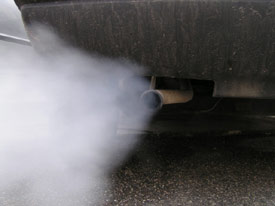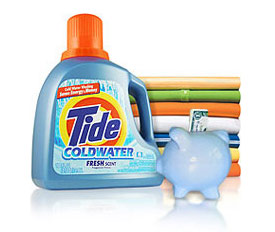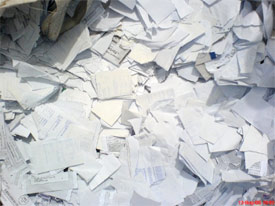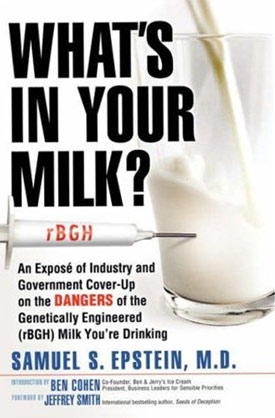Some good very sensible tips that are easy to do and can make a difference.
You can view the original post here, at TheDailyGreen.com.
1. Stop idling your vehicle
Every moment you spend idling your car’s engine means needlessly wasting gas, as well as rougher wear on your vehicle. Idling for more than 10 seconds wastes more gas than is needed for startup. Overall, Americans idle away 2.9 billion gallons of gas a year, worth around $78.2 billion.
My Input: Most idling takes place in the colder months when people warm up there car for 5-10+ minutes. This is unnecessary as modern vehicles are designed to be driven within 30 seconds of starting. Excessive idling can actually hurt your vehicle as the fuel is not ‘fully combusted’ during idling which isn’t great for the engine or the catalytic converter. Read more on it here and here.
2. Turn Off Your Computer
Save energy and wear and tear on your hardware by shutting down your computer at night. You’ll save an average of $90 of electricity a year.
My Input: I have the power button on my computer programmed to put the system to sleep. You can do this on windows and mac systems easily. Then when I am going to bed or out for the day I just press the power button and it sleeps. The nice thing about sleep mode is the computer will ‘wake’ in only a few seconds so it isn’t a big nuisance.
3. Sign Up for Green Energy
More than half of all electricity consumers in the U.S. (And Canada) now have the option of purchasing green power from their utility. Find out how you can buy it by visiting the Department of Energy’s state-by-state list of providers. You can also check with your own utility to see what’s available.My Input: I get my energy from Bullfrog Power. It is an easy sing-up process and typically costs me an extra $25 a month. Bullfrog’s green electricity comes exclusively from wind and low-impact hydro facilities that meet or exceed Environment Canada’s EcoLogo standard for renewable electricity.
4. Turn Down the Thermostat
It definitely pays to give a thought to your thermostat, since most households shell out 50 to 70% of their energy budgets on heating and cooling. For every degree you lower the thermostat, you’ll save between 1 and 3% of your heating bill. Do the same thing in reverse with air conditioning.
My Input: I have a programmable thermostat which I set to 22 degrees Celsius when I am at home in the mornings and evenings, and 20 degrees through the day (when I’m not home) and night (when I am in bed). If we find it cool at all we turn on the gas fireplace which warms the place up a few degrees quite quickly.
5. Wash Your Laundry in Cold Water
An easy way to clean green is to turn the dial on your washing machine to cold. Most loads don’t need hot water, and 90% of the energy used by washing machines goes into heating the water. The higher the water temperature, the higher the cost to you and the planet.
My Input: This one’s a no-brainer. There is simply no need to wash most things in hot water, especially now since the development of cold-water specific detergents. Try it out if you haven’t already. And of course, look for phosphate and petrochemical free detergents, as they are becoming increasingly available from many of the big brands. As an alternative to the big brands, which tend to use harsher chemicals in their most ‘eco-friendly’ products, you can look for laundry detergent from Seventh Generation, click here to read more.
6. Pay Bills Online, Use E-Post
Save natural resources — as well as late fees — by enrolling in online bill-paying options. Paperless billing not only saves trees, it also eliminates the fossil fuel needed to get all those billing envelopes from them to you and back again. Plus, you’ll save money on stamps.
My Input: Most companies now will let you forgo mailed monthly bills and statements for online billing through their website. And most, in Canada, will let you sign up for ‘e-post billing’ which is setup through your bank. This last option makes life a little easier as all your bills will be filled electronically (and not mailed) into your ‘e-post account’ which you setup with your bank. It doesn’t take long to setup and makes it easy to find your all your bills in one convenient spot. Very handy, and your bills will be saved for upto 7 years I believe. Find out more by clicking here.
7. Jettison Junk Mail
Around 100 million trees and 28 billion gallons of water are used to send junk mail to Americans every year, according to greendimes.com. You can stop 75% of unsolicited mail by registering on the Mail Preference Service on the Direct Marketing Association Website (for a fee of $1). Within 90 days, most unsolicited mail will stop.
My Input: Again, this one’s a no-brainer. Junk mail is just wasteful from every respect. What isn’t mentioned above is all the fuel needed to deliver this mail to your house, and all the time you waste sorting it into the recycle bin, and all the fuel used trucking it to the recycling plant. Insanity at it’s finest. In Canada all you have to do is go to your post office and sign a form stating you don’t want junk mail anymore. It’s that simple. Plan a day this week and do it.
8. Print on Two Sides
Know what? It’s not that hard to print on both sides of the paper. But even though most software programs give that option, most of us still print only on one side of the page. Consider this: the U.S. alone uses 4 million tons of copy paper annually, about 27 pounds per person. Save dough and your local landfill. Print on two sides.
My Input: It is that simple. When you print something, a dialogue box pops up giving you the opportunity to select the printer to print to, in that dialogue there will be a properties button (windows) that you can click. This will allow you to modify the printer settings for that particular printer – here is where you can tell the printer to print on both sides. And of course, everything shouldn’t be printed 2-sided, so you can easily change this setting as needed. Very simple and effective. It’s also very important to try and buy non-chlorine bleached paper, it’s out there and readily available, and it isn’t more money either. Make sure to look for paper with the highest amount of post-consumer recycled fiber.
9. Carpool It!
If your drive to work is 25 miles each way and at least half is in typical stop-and-go traffic, you’ll save almost 10 percent of your monthly carbon emissions by carpooling. Not to mention the gas dollars you’ll save and the fun you’ll have sharing office gossip with your friends.
My Input: Carpooling is a great idea but unfortunately isn’t that easy to get started. It’s important to remember that once you have a system setup with other commuters it is all clear sailing. Honestly. It’s all about getting it started. And carpooling isn’t just for getting to and from work, try to pay attention to other times when you can do it on a one time basis. An example of this would be going to the movies with friends, if they don’t live too far out of your way (which might mitigate the idea of carpooling) go and pick them up as apposed to all of you driving.
10. Choose Hormone-Free Milk
Look for milk that has been certified organic or carries the words “no artificial hormones.” Conventional dairies inject cows with synthetic recombinant bovine growth hormone (rBGH), aka bovine somatotropin (rbST), to boost production. The practice has been implicated in udder infections, requiring more veterinary antibiotic use, and is banned in many countries. Some scientists worry the hormones may affect consumers.
My Input: The use of rBGH is really only an issue if you live in the U.S. as it is banned pretty much everywhere else. Why the FDA hasn’t banned it I will never know. Well that’s a lie, I do know, the bureaucracy of the U.S. government is easily swayed by bags of money, in this case from Monsanto and Eli Lilly, the makers of rBGH, and it’s close cousin rBST (and I should also mention that many of the top officials in the FDA either previously worked for or were just about to be hired by Monsanto, with large salaries I might add). This stuff is bad news for humans and cows alike. Here are some exerts from Wikipedia regarding rBGH/rBST, which you can find here:
Effects on cows: Two meta-analyses have been published on rBST’s effects on bovine health. Findings indicated an average increase in milk output ranging from 11%-16%, a nearly 25% increase in the risk of clinical mastitis, a 40% reduction in fertility and 55% increased risk of developing clinical signs of lameness. The same study reported a decrease in body condition score for cows treated with rBST even though there was an increase in their dry matter intake.
Effects on humans: IGF plays a role in the formation of new tumours and increased levels of IGF-1 may be linked to increased risk of breast, colon, and prostate cancer. However IGF is involved in many biological processes so it is not possible to assign a clear-cut cause and effect relationship. IGF-1 is not denatured by pasteurisation, so consumption of milk from rBST treated dairy cows will increase the daily intake of IGF-I.
Now just because we don’t have rBGH in Canada doesn’t mean we don’t use hormones and antibiotics because we do, although they aren’t quite as bad. That said you should try to buy organic or antibiotic free milk when possible. It tastes better and is way better for you. Seriously.





Great info Brian! of coarse most are no brainers to us, but there is always something new i learn to do that seams a no brainer afterward – i just never thought of it ;) So hopefully this will help others do more.
Two points on the above. The hot water washing machine issue is only for front loaders, i don’t think top loaders have electric water heaters. It is also harder to find cold specific detergent for non HE washers. You should still use cold as much as possible and at least rinse in cold. Since this is an eco list, it should also be noted to use eco friendly detergent! Can’t believe they didn’t mention this. Non phosphate, biodegradable. Again if its got chemicals you wouldn’t swim in – don’t use it in your house.
Second, most ink jet printer don’t print double sided, even our 2yr old copier at work doesn’t. Sad eh.
Continuing from the milk advice – It should advise not to drink that much milk anyway. Since the topic of antibiotics and hormones came up. I thought id share a no brainer that i didn’t know last year. We discovered a local farm for fresh and affordable meat and natural eggs. Seriously, the meat is better for you, tastes a tiny bit better, and is only dimes more then the grocery store. Not like the over- priced organic meat at the grocer’s. The eggs bought right from the farm last for months, not days. The store eggs have wasted all their best before dates in transit. So my eco tip is to find such a farm near you and check it out.
Ya it is always good to read lists like this as they ‘refresh’ your memory and remind you of things that can help that you might have already know but forgotten.
Now about the cold-water laundry, we have a top loader and wash pretty much everything in cold water, and we haven’t always used cold water detergent either. Now there might be some ‘cons’ to doing it this way but I haven’t seen any. My clothes come out clean and I hang them up to dry.
Good point about eco-friendly detergents, I did have a note about that in the caption of the image (of the tide detergent) but I have now added a note to the ‘My Input’ section.
And about printing double sided, it is true a lot of printers don’t do it all that well, most I have seen will still do it – and by do it I mean you do it. The way I have seen it work on a lot of printers is if you pick double sided it will run the job for side 1 at which time you have to flip the paper and re-add it to the printer then click continue. Now I can’t say that every printer does offer this feature, but luckily even the 7 year old Lexmark I have at home does (although I barely ever print, my wife does for University).
Tell me more about this farm though. I have heard of many of these organic farms but have never been able to actually ‘buy’ anything. I did find one company who buys all their meat/dairy/eggs from the Amish, who don’t use any hormones/antibiotics, but they want me to buy a years supply up front, which means I need a bigger freezer!